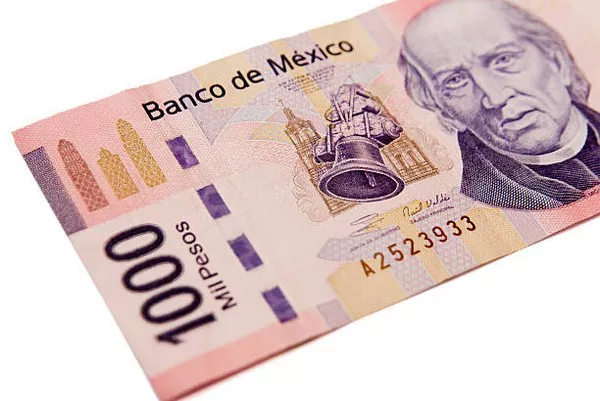The Mexican peso (MXN) is a critical currency in the global financial system, representing the economy of Mexico, the second-largest economy in Latin America. Its value and stability are influenced by a range of domestic and international factors. Understanding these drivers is essential for investors, policymakers, and economists who track emerging market currencies. This article explores the key factors driving the Mexican peso, including economic indicators, political events, trade dynamics, and global market trends.
Economic Indicators
1. Inflation Rates
Inflation rates play a significant role in determining the value of the Mexican peso. High inflation erodes the purchasing power of a currency and can lead to depreciation. The Banco de México (Banxico), Mexico’s central bank, closely monitors inflation and adjusts interest rates to manage price stability. Low and stable inflation is generally favorable for the peso, while high inflation can create downward pressure.
2. Interest Rates
Interest rates set by Banxico are crucial in influencing the Mexican peso. Higher interest rates often attract foreign investment, as investors seek higher returns on their investments. This influx of capital can lead to an appreciation of the peso. Conversely, lower interest rates may result in capital outflows and a weaker peso. Banxico’s monetary policy decisions, therefore, have a direct impact on the currency’s value.
3. Economic Growth
Mexico’s economic growth affects the peso’s value by influencing investor confidence and economic stability. Strong economic performance generally supports a stronger currency, while slow growth or recession can weaken it. Key indicators of economic health include GDP growth, industrial production, and employment rates. Investors assess these indicators to gauge the economic outlook and make decisions that impact the peso.
4. Fiscal Policy
Government fiscal policy, including budget deficits and public debt levels, influences the Mexican peso. Large fiscal deficits or rising public debt can undermine investor confidence and lead to currency depreciation. Conversely, a sound fiscal policy with manageable deficits and controlled debt levels supports a stable peso. Mexico’s budgetary policies and reforms are closely watched by market participants.
Political Factors
1. Political Stability
Political stability is a key driver of the Mexican peso. Uncertainty or instability in the political environment can lead to market volatility and currency depreciation. Elections, changes in government, and political unrest can impact investor confidence and economic policies. The Mexican peso tends to respond to political events that affect governance and economic reforms.
2. Trade Policies and Agreements
Trade policies and agreements significantly influence the peso. Mexico’s trade relationships, particularly with major partners like the United States, have a direct impact on its currency. The United States-Mexico-Canada Agreement (USMCA), which replaced the North American Free Trade Agreement (NAFTA), plays a crucial role in shaping trade dynamics. Changes in trade agreements or tariffs can impact trade balances and currency value.
3. Corruption and Governance
Issues related to corruption and governance can affect economic performance and investor confidence. Transparency, rule of law, and effective governance contribute to a stable investment environment. Corruption scandals or governance challenges can create economic uncertainty and weaken the peso. Efforts to improve governance and reduce corruption are important for maintaining currency stability.
Trade and External Factors
1. Trade Balance
Mexico’s trade balance, which measures the difference between exports and imports, influences the peso. A trade surplus (when exports exceed imports) generally supports a stronger currency, while a trade deficit (when imports exceed exports) can lead to depreciation. Mexico’s key exports include oil, manufactured goods, and agricultural products, while it imports machinery, chemicals, and consumer goods.
2. Commodity Prices
Mexico is a major producer and exporter of commodities, including oil. Fluctuations in global commodity prices, particularly oil prices, impact Mexico’s trade balance and currency value. Higher oil prices can boost export revenues and support the peso, while lower prices may have the opposite effect. The correlation between commodity prices and the peso is a key consideration for investors and policymakers.
3. Foreign Investment
Foreign direct investment (FDI) and portfolio investment play a crucial role in driving the Mexican peso. High levels of FDI indicate investor confidence and contribute to a stronger currency. Conversely, capital outflows or reduced investment can lead to depreciation. Mexico’s investment climate, regulatory environment, and economic prospects influence the flow of foreign capital and, consequently, the peso’s value.
Global Market Trends
1. Global Economic Conditions
Global economic conditions, including economic growth in major economies and international market trends, affect the Mexican peso. Economic slowdowns in key trading partners or global financial instability can create uncertainty and impact currency values. The peso is influenced by broader global economic trends and investor sentiment.
2. U.S. Dollar Strength
The strength of the U.S. dollar (USD) has a significant impact on the Mexican peso, given the close economic ties between Mexico and the United States. A stronger USD can lead to a weaker peso, as it makes Mexican exports more expensive and imports cheaper. Conversely, a weaker USD can support the peso. Exchange rate movements between the USD and MXN are closely watched by market participants.
3. Geopolitical Events
Geopolitical events, such as international conflicts, trade disputes, and global policy shifts, can influence the Mexican peso. Geopolitical instability or changes in global trade dynamics can create market volatility and impact currency values. The peso is affected by global events that alter investor perceptions and economic conditions.
See Also: Are Peso Coins Still Used in Mexico?
Conclusion
The Mexican peso is influenced by a complex interplay of economic, political, and external factors. Inflation rates, interest rates, economic growth, fiscal policy, and political stability all play crucial roles in determining the peso’s value. Trade dynamics, commodity prices, foreign investment, and global market trends further impact the currency. Understanding these key drivers provides valuable insights into the Mexican peso’s performance and its role in the global financial system. As Mexico continues to evolve economically and politically, the peso’s value will remain subject to a range of influencing factors, shaping its future trajectory in the global market.


